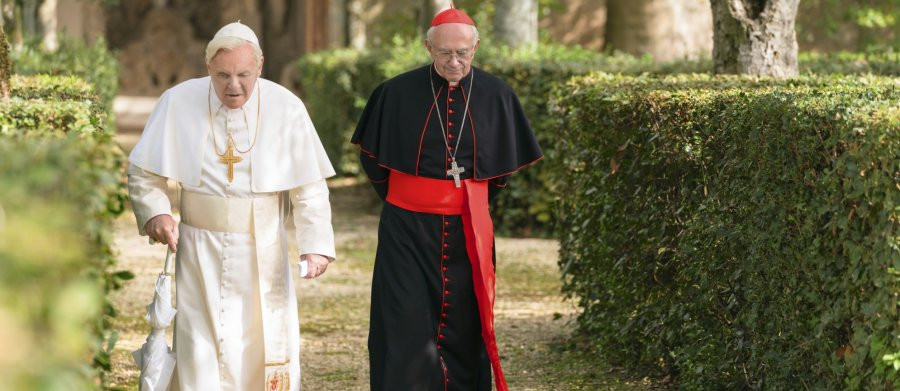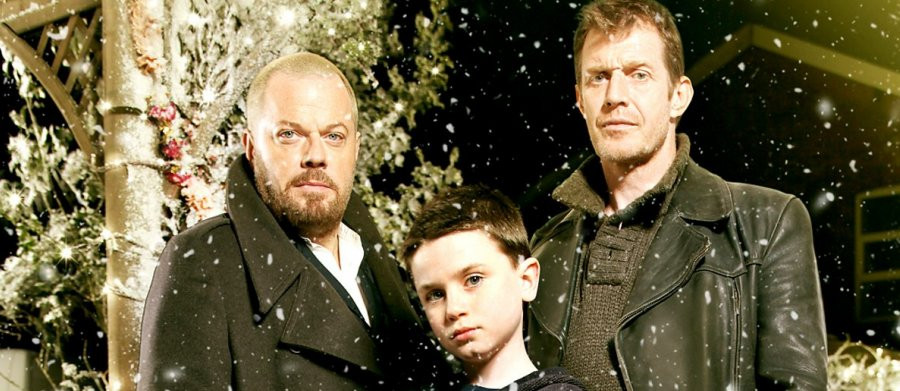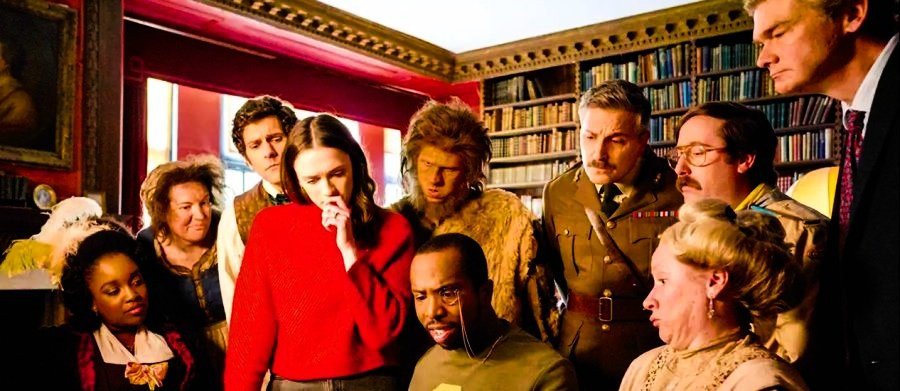
The Bonfire of Destiny/Le Bazar de la Charite
2019 - France‘A great deal of money seems to have been invested in giving us an authentic feeling of time and place.’
The Bonfire of Destiny/Le Bazar de la Charite review by John Winterson Richards
The tragic fire at the annual charity bazaar run by upper class Catholics in Paris in 1897 is in many ways the French equivalent of the later sinking of the Titanic - except without much in the way of "women and children first."

To put in in context, this was the original fin de siècle, part of what became known in retrospect as La Belle Epoque, in which, especially but not only in France, an outward display of prosperity, literary and artistic originality, and technological innovation papered over a deepening sense of moral and social decay. After a difficult beginning, the Third French Republic seemed to have settled down to a period of relative stability, but deep political and religious divides remained. A widely respected President of the Republic had been murdered by an Anarchist in 1894, and the Dreyfus Affair was soon to reveal the depth of Antisemitism in France while the later Affaire des Fiches was to reveal official Anti-Catholicism.
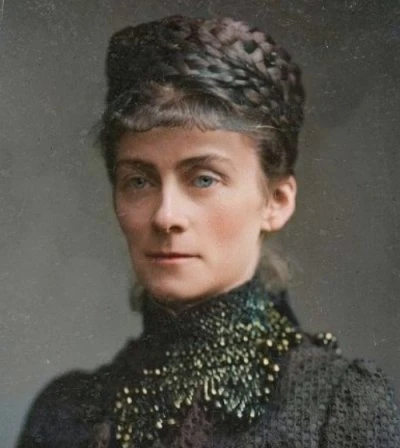
The tragedy at the bazaar and the reaction to it seem almost symbolic of the state of France at that point. The fire was actually started by an exhibition of the great French technological triumph of the time, the cinematograph, invented by the Lumiere brothers only a few years before. It spread rapidly in what was essentially a pinewood shed hung with flammable materials for the bazaar. The exits were few and inadequately marked. There was understandable panic. The majority of the 126 people who died were aristocratic women. They included the Duchess of Alencon, sister to the Empress of Austria - and since the Empress enjoyed a level of celebrity that has been compared with that of Princess Diana, this had a huge impact on public consciousness.
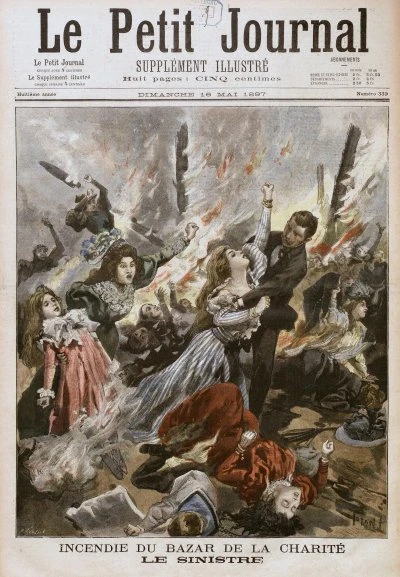
The left-wing press of the period made much of the disproportionate number of women among the dead. There were lurid tales of upper-class men trampling over women in a frenzy to get out. This was contrasted with the noble conduct of working-class bystanders such as the staff of the neighbouring Hotel de Paris, who helped dozens escape, and Baron de Rothschild's coachman, who used a sledgehammer to enlarge an opening through which others were able to crawl out. In the same category are two clergymen who rushed from a nearby convent to help, but they tend be written out by the Anti-Catholic element.
This class warfare narrative has become the popularly accepted version, but it is historically controversial to put it mildly. For a start, the nature of the event meant that there were far more women than men in attendance, which goes some way to explaining the gender death gap. While the stories of working-class heroism are true, there are also stories about the courage of the upper-class attendees which tend to be left out. The Duchess of Alencon refused to leave until all her staff were safe and was last seen calmly leading a circle of women in prayer. The Vicomtesse de Saint-Perier was a well built woman, sadly too big boned to fit through the enlarged hole in the wall, so she lifted other women through it instead. The chairman of the organising committee himself, when later held liable in court, received only a nominal fine because it was generally accepted that he had acted heroically in his attempts to save others.
However, the writers of the French television drama Le Bazar de la Charite, retitled rather clumsily and distastefully The Bonfire of Destiny in English, decided to ignore all these irritating facts and go with the populist version of cowardly toffs versus brave workers.

Not only does it ignore commendable actions of aristocrats and priests, it goes out of its way to make every upper class male as unpleasant as possible. The chief villain is the Conservative candidate for the President of the Senate: it is not enough that he starts out a wife beater - he is gradually revealed as an associate of criminals, then a murderer, then a spy and a traitor. If that is not enough, it is implied that he fed his little daughter's guinea pig to his dog. Boo, hiss.
Just in case we are not sure on whose side we are supposed to be, our working class hero, who is given the sledgehammer that was actually wielded by the Rothschild coachman, is an Anarchist. To be honest, his credentials to be both a working man and an Anarchist are pretty thin: he is actually a thief, and he never does any actual labour that we see or hear mentioned; and he is presented as a uniquely pacifist Anarchist when the reality at the time was extremely violent. Never mind, he is brave and good looking, so he is our hero.
As well as its somewhat dated class politics, the script is fairly blunt about its gender politics. It is perhaps to be expected that, since it was made in the immediate aftermath of "Me Too," which reached even France, there should be a lot of unsubtle stuff about the oppression of women and France's undeniably patriarchal family laws at the time. Fair enough, but if one looks beyond the fact that the three principal women are good looking - and therefore meant to be heroic - none of them are strictly honourable in their actions either.
Given the politics so openly on display, it is perhaps surprising to note that The Bonfire of Destiny is a coproduction by Netflix and TF1, a French television channel that is supposed to be right of centre.
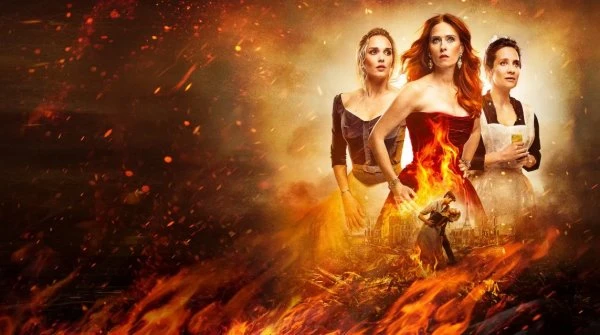
The plot is, in any case, more melodrama than history. The story only begins with the famous fire, which takes place in the first episode, and is really more concerned with what happens to our three heroines afterwards. Two, somewhat unwisely, take the opportunity to fake their own deaths, even if it should in fairness be said that one of them is given little choice in the matter. The third must cope with the consequences in the form of a very uneven "love triangle" after her fiancé proves not to be the man she thought he was while she is, at the same time, drawn to the hunky Anarchist who saved her life.
Much of the plotting that follows is frankly absurd. Coincidences abound. Everything happens around three families who are already connected. Characters act in the most historically and psychologically unlikely ways. In general, the story has more holes than fromage Suisse.
Nevertheless, it all remains strangely compelling, and many of the individual scenes and sequences maintain a high level of suspense thanks to a strong cast and skilled direction.
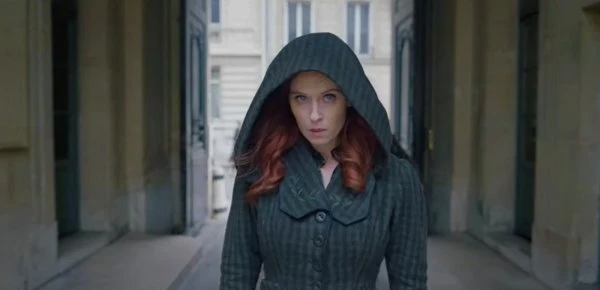
Audrey Fleurot (Spiral) manages to make the rather foolish wife of the ghastly Senator more sympathetic than her actions, even if it must be said that about ninety per cent of this sympathy is due to her being married to him. Camille Lou, best known in France as a musical star, copes well with the more supposedly more serious role of the girl forced to choose between her inadequate fiancé and her manly rescuer - not that there is much dramatic tension in that decision. Her maid is played by Julie de Bona, who gives the most accomplished performance of the three principals as a woman propelled into a truly strange situation.

Best of all is the veteran Josiane Balasko (Trop Belle Pour Toi) as a mysterious aristocrat who seems at first to be wholly disagreeable, but who turns out to have an unselfish agenda, even if she is ruthlessly pragmatic in how she achieves her objective. It is a performance that hints at great emotion kept firmly under control.

The male characters seem cartoonish by comparison. If Gilbert Melki goes completely over the top as the Archvillain, he is only doing what the script demands. Antoine Dulery is more nuanced as a fictional version of the chairman of the organising committee and the script develops greater sophistication towards the end in giving him a degree of redemption. The same is true of the cowardly fiancé played by Theo Fernandez, who eventually finds some moral courage to make up for his lack of the physical kind. The most interesting male performance comes from Stephane Guillon as Celestin Hennion, a significant figure in the history of French policing, but not enough is made of the character after a strong start - perhaps out of fear that he might have overshadowed the female protagonists.

A great deal of money seems to have been invested in giving us an authentic feeling of time and place. The production design, props, and set dressing departments deserve high commendation. There are some beautiful locations, mainly those representing the houses of the rich. As a result, we get a strong sense of the romantic glamour of La Belle Epoque, but also a good contrast with the squalor of the poorer districts of Paris at the time, even if the sets for the latter are sometimes a bit too reminiscent of Les Misérables.

Although the script plays fast and loose with history, it deserves its share of the credit for some fine period details. For example, a newspaper boy shouts about France's new cannon - because it was in 1897 that the famous French "75" was officially brought into service. On a more contemporary note, one sees a lot of shots of Notre Dame de Paris in the background, and one cannot help wondering if this is a deliberate visual reference, given that another disastrous fire gutted Notre Dame while production was taking place. Incidentally, another, much smaller Notre Dame, a chapel known as Notre Dame de Consolation, was built on the site of the 1897 fire.
In the end, The Bonfire of Destiny is basically soap, but it is well packaged soap. It feels oddly familiar, a bit like the classic American "miniseries" of the Seventies and Eighties. Viewed as such, rather than as a piece of agitprop, it is very entertaining. It was sufficiently successful for Netflix and TF1 to reunite with the same production team for another historical drama, Les Combattantes, known in English as Women At War, with the same three leading ladies, albeit playing very different characters and set a few years later - at the beginning of the Great War, when La Belle Epoque came crashing to its end. However, that, as they say, is literally another story.
Seen this show? How do you rate it?
Seen this show? How do you rate it?
Published on March 15th, 2023. Written by John Winterson Richards for Television Heaven.


